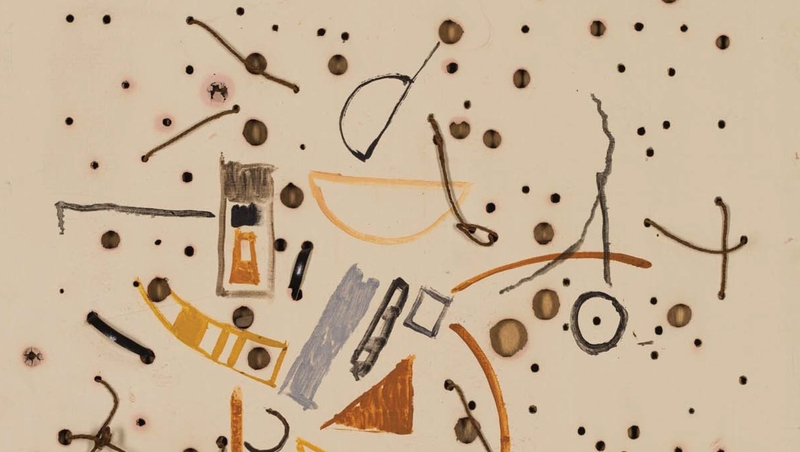IN PURSUIT OF THE SPIRITUAL
H.A. Karunaratne

H.A. Karunaratne, prolific artist is known for his significant abstract works of art that spans across 60 years with a legacy that remains entrenched in the innate fabric of Sri Lanka’s art and culture. His art practice mainly involves painting and sculpture, where he uses a variety of media and his abstract expressionist paintings vividly embody the stillness, and dissolution of time. His works have been exhibited extensively both locally and internationally and is in the collection of leading art museums and galleries world over. In recognition of his contribution to the Sri Lankan art scene, on 28th of June, Theertha Red Dot Gallery held an exhibition of works of art by H.A. Karunaratne, to mark the book launch written by artist Anoli Perera published by Taprobane Collection.'
The transformation of the Sri Lankan art took place at the tail end of colonial period, from ‘43 Group that vocalized the sociopolitical issues while experimenting on artistic expression. The ‘43 Group which comprised artists including George Keyt, Justin Deraniyagala, Ivan Peries, George Claessen and Richard Gabriel, showed inclination towards a mix of tradition and influence of the Ecole de Paris, moving away from the academic Victorian style of the colonial practice.
Sri Lankan modern art mostly remained as figurative style till the 60s. The subject matter dealt by the members of the ’43 Group was similar to that of their predecessors – landscapes, portraits and village scenery. This situation changed in 1960s with the practice of some members of ’43 Group such as George Claessen, non-figurative tradition of painting started to establish its foothold in the Sri Lankan art scene. This change was enhanced with the emergence of H.A. Karunaratne as an influential artist with his skills acquired from New York. H. A. Karunaratne’s works defined the place of ‘spirituality’ in Sri Lankan modern art. This trend had great appeal among the people and the new generation of art students who were conditioned by the Buddhist philosophy. Karunaratne’s art practice had great relevance to Sri Lankan context in terms of its spiritual inclination, and remained insular despite of increasing anxiety and stresses that was gradually engulfing the Sri Lankan social life. Karunaratne’s formal academic art education began at the Govt. College of Fine Arts. He was trained under eminent artists J. D. A. Perera, David Paynter and Stanley Abeysinghe. He had a short spell of art training in New York and Tokyo in the 1960s. He was a lecturer in painting at the Institute of Aesthetic Studies (IAS) of the University of Kelaniya where he was a major influence on generations of young artists to work with the ideas of abstraction and abstract expressionism. This was the only art institution that offered a degree level education in Sri Lanka for a long time for generations of young artists.

Click below to read the full article.


